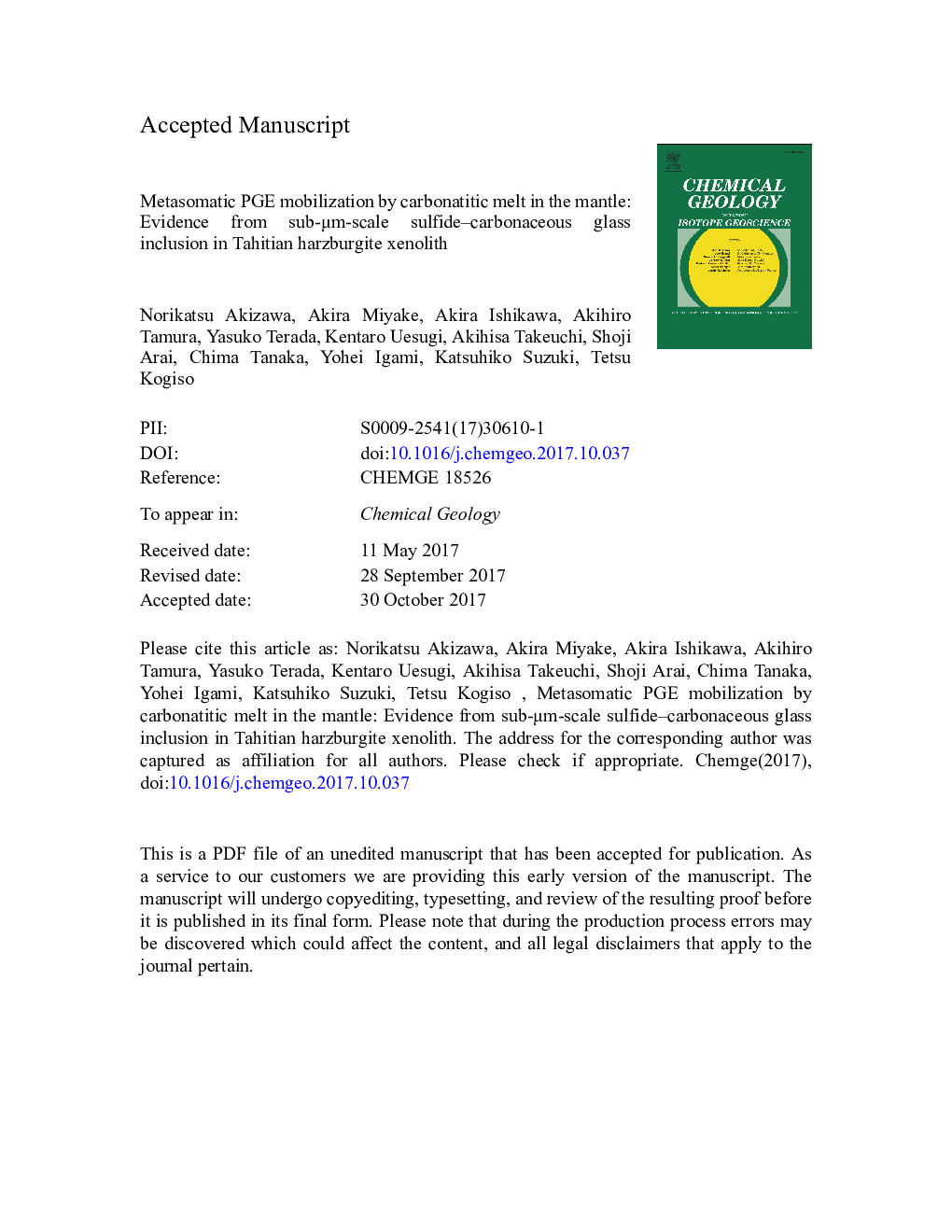| Article ID | Journal | Published Year | Pages | File Type |
|---|---|---|---|---|
| 8910503 | Chemical Geology | 2017 | 55 Pages |
Abstract
Here, we report a sub-micrometer-sized sulfide-glass inclusion array in a Tahitian harzburgite xenolith. The textural and chemical characteristics were disclosed with employing synchrotron X-ray and transmission electron microscope analyses. The results demonstrate that the sulfide and glass contain appreciable amounts of PGE (9.7 at.% Ir, 4.3 at.% Rh and 5.8 at.% Pt) and carbon (21.2 at.% C), respectively. The sulfide-glass inclusion array is hosted in sodium-enriched clinopyroxene (up to 1.8Â wt% Na2O) that shows vein-like distribution and partly replaces orthopyroxene. Primitive mantle-normalized trace-element patterns of the clinopyroxene show a general increase from heavy rare-earth elements (REEs) to light REEs with negative anomalies in Pb and high-field-strength elements such as Zr, Hf and Ti, which indicate equilibration with Mg-rich carbonatitic melt. These results suggest that Na-bearing Mg-rich carbonatitic melts were involved in the harzburgite formation and that Ir, Rh and Pt were mobilized through carbonatitic metasomatism and eventually distributed in the sulfides.
Keywords
Related Topics
Physical Sciences and Engineering
Earth and Planetary Sciences
Geochemistry and Petrology
Authors
Norikatsu Akizawa, Akira Miyake, Akira Ishikawa, Akihiro Tamura, Yasuko Terada, Kentaro Uesugi, Akihisa Takeuchi, Shoji Arai, Chima Tanaka, Yohei Igami, Katsuhiko Suzuki, Tetsu Kogiso,
